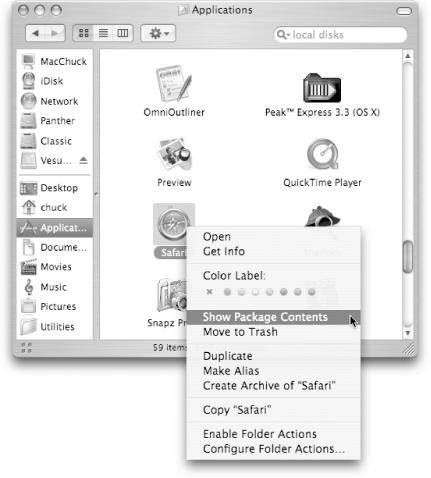Bundles
Under the hood, folders are actually Unix directories. However, not all Unix directories on the filesystem are folders; some are bundles, holding application resources or special multiple-file document types that the Finder doesn’t think you really need to know about. For example, many of the programs in the Applications folder are bundles, though they may appear to be just a single file in the Finder. Other examples include:
Rich text documents you create with TextEdit that contain images and graphics (which end with a
.rtfdextension).Keynote presentation files (which end with a
.keyextension)Data contained in a backup set, created with .Mac’s Backup application (which end with a
.backupextension)
To view the contents of a bundle, simply Control-click on the file and select “Show Package Contents” from the contextual menu, as shown in Figure 2-20. When you select this option, a new Finder window opens in Icon View, revealing the bundle’s contents. You can also select an item in the Finder and then select “Show Package Contents” from the Action menu in the Finder’s toolbar.

Figure 2-20. Control-click on a bundle and select the “Show Package Contents” option to see what’s inside
Another way to view a bundle’s contents is from the
command line, using the Terminal application
(/Applications/Utilities). For example, to view the resources associated with Safari, do the following: ...
Get Mac OS X Panther in a Nutshell, 2nd Edition now with the O’Reilly learning platform.
O’Reilly members experience books, live events, courses curated by job role, and more from O’Reilly and nearly 200 top publishers.

